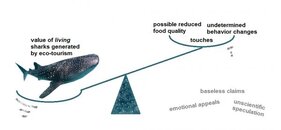klausi
Contributor
Hi All - I have compiled a few arguments and counter arguments regarding the whale shark feeding in Oslob, Cebu.
It's all here.
In short, I believe that a lot of the arguments against the whale shark feeding are unscientific and emotional; there are indeed some real issues with the feeding, but they are minor in relation to the benefit of the shark tourism: that locals have a motivation to let the sharks live!

It's all here.
In short, I believe that a lot of the arguments against the whale shark feeding are unscientific and emotional; there are indeed some real issues with the feeding, but they are minor in relation to the benefit of the shark tourism: that locals have a motivation to let the sharks live!





